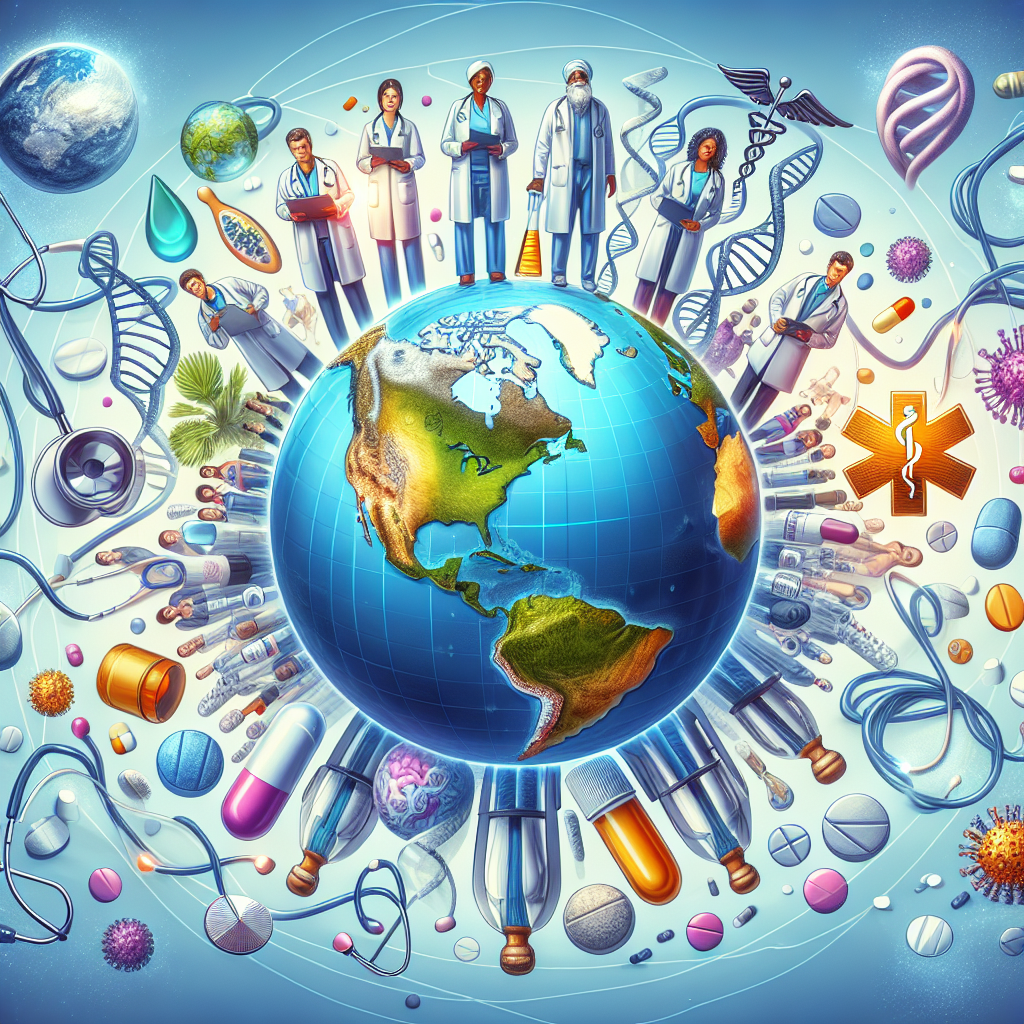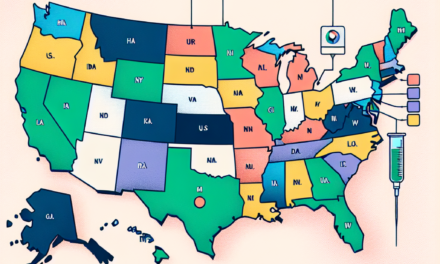Addressing Global Medical Challenges: Potential Solutions

The global healthcare landscape is fraught with challenges that require innovative and sustainable solutions. From infectious diseases to healthcare accessibility, the issues are complex and multifaceted. This article explores potential solutions to some of the most pressing global medical challenges, providing insights into how these solutions can be implemented effectively. By examining case studies, statistics, and expert opinions, we aim to shed light on the path forward for global health.
1. Combating Infectious Diseases
Infectious diseases remain a significant threat to global health, with outbreaks of diseases like COVID-19, Ebola, and Zika virus highlighting the need for robust strategies to combat these threats. Addressing infectious diseases requires a multifaceted approach that includes prevention, rapid response, and effective treatment.
1.1 Strengthening Surveillance Systems
One of the most critical components in combating infectious diseases is the establishment of strong surveillance systems. These systems are essential for early detection and response to outbreaks, allowing for timely interventions that can prevent widespread transmission.
For instance, the Global Influenza Surveillance and Response System (GISRS) has been instrumental in monitoring influenza viruses worldwide. By collecting and analyzing data from various countries, GISRS helps in the early detection of new influenza strains, enabling the development of vaccines and other preventive measures.
- Implementing real-time data sharing across borders to enhance global surveillance.
- Investing in technology to improve data collection and analysis.
- Training healthcare workers in disease detection and reporting.
Case studies from countries like South Korea, which successfully managed the COVID-19 outbreak through robust surveillance and contact tracing, demonstrate the effectiveness of these strategies.
1.2 Enhancing Vaccine Development and Distribution
Vaccines are one of the most effective tools in preventing infectious diseases. However, the development and distribution of vaccines face numerous challenges, including lengthy development times and unequal access across different regions.
To address these challenges, initiatives like the Coalition for Epidemic Preparedness Innovations (CEPI) are working to accelerate vaccine development. CEPI’s efforts during the COVID-19 pandemic, in collaboration with pharmaceutical companies and governments, led to the rapid development of several vaccines.
- Investing in research and development to shorten vaccine development timelines.
- Ensuring equitable distribution of vaccines through global partnerships.
- Building infrastructure to support mass vaccination campaigns.
Moreover, the COVAX initiative, co-led by Gavi, the Vaccine Alliance, WHO, and CEPI, aims to ensure fair access to COVID-19 vaccines for all countries, regardless of their economic status.
1.3 Promoting Public Health Education
Public health education plays a crucial role in preventing the spread of infectious diseases. By educating communities about hygiene practices, vaccination benefits, and disease prevention, we can reduce the incidence of infectious diseases.
Programs like the Global Health Security Agenda (GHSA) focus on strengthening public health systems and promoting health education. These programs work with countries to develop strategies that enhance community awareness and engagement in disease prevention efforts.
- Developing culturally sensitive educational materials.
- Engaging community leaders to promote health education initiatives.
- Utilizing digital platforms to reach wider audiences.
Successful examples include the use of community health workers in Africa to educate populations about Ebola prevention, which significantly reduced transmission rates.
2. Improving Healthcare Accessibility
Access to healthcare is a fundamental human right, yet millions of people worldwide lack access to essential health services. Improving healthcare accessibility involves addressing barriers such as cost, geographic location, and availability of healthcare professionals.
2.1 Expanding Telemedicine Services
Telemedicine has emerged as a powerful tool in improving healthcare accessibility, especially in remote and underserved areas. By leveraging technology, telemedicine allows patients to receive medical consultations and treatments without the need for physical travel.
The COVID-19 pandemic accelerated the adoption of telemedicine, with many healthcare providers offering virtual consultations to minimize the risk of virus transmission. This shift has highlighted the potential of telemedicine to bridge the gap in healthcare access.
- Investing in digital infrastructure to support telemedicine services.
- Training healthcare professionals in telemedicine practices.
- Ensuring data privacy and security in telemedicine platforms.
Countries like India have successfully implemented telemedicine programs to reach rural populations, providing access to specialist consultations that were previously unavailable.
2.2 Implementing Universal Health Coverage
Universal Health Coverage (UHC) aims to ensure that all individuals have access to the health services they need without financial hardship. Implementing UHC requires comprehensive policy reforms and investments in healthcare systems.
Several countries have made significant strides towards UHC. For example, Thailand’s UHC program has provided access to essential health services for its entire population, resulting in improved health outcomes and reduced poverty levels.
- Developing sustainable financing models for UHC.
- Strengthening primary healthcare systems as the foundation of UHC.
- Engaging stakeholders in the design and implementation of UHC policies.
The success of UHC in countries like Thailand and Rwanda demonstrates the potential of this approach to transform healthcare accessibility globally.
2.3 Addressing Healthcare Workforce Shortages
A critical barrier to healthcare accessibility is the shortage of healthcare professionals, particularly in low- and middle-income countries. Addressing this issue requires strategic investments in education and training programs for healthcare workers.
Programs like the Global Health Workforce Network (GHWN) focus on building a sustainable healthcare workforce by supporting education and training initiatives. These programs aim to increase the number of healthcare professionals and improve their distribution across regions.
- Investing in medical education and training programs.
- Providing incentives for healthcare professionals to work in underserved areas.
- Strengthening international collaboration to address workforce shortages.
Countries like Ethiopia have successfully increased their healthcare workforce through targeted training programs, resulting in improved healthcare access for their populations.
3. Tackling Non-Communicable Diseases (NCDs)
Non-communicable diseases (NCDs) such as heart disease, diabetes, and cancer are leading causes of death globally. Addressing NCDs requires a comprehensive approach that includes prevention, early detection, and effective management.
3.1 Promoting Healthy Lifestyles
Prevention is a key strategy in tackling NCDs, and promoting healthy lifestyles is central to this effort. Encour





